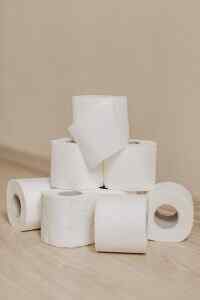Amazon Self Publishing Book Sizes: Everything You Need to Know
Introduction
Self-publishing has become increasingly popular in recent years, as authors seek to take control of their work and reach a wider audience. Amazon’s Kindle Direct Publishing (KDP) is one of the most popular platforms for self-publishing, and it offers a variety of options for book sizes.
Choosing the right book size is important for a number of reasons. It will affect the overall look and feel of your book, as well as its readability and portability. It will also impact the printing and shipping costs.
In this article, we will discuss the different book sizes available on Amazon KDP and help you choose the right size for your book.
Standard Book Sizes
Amazon KDP offers a variety of standard book sizes, including:
- 5.5″ x 8.5″ (digest size)
- 6″ x 9″
- 6.14″ x 9.21″ (trade paperback)
- 8.5″ x 11″
The most popular book size is 6″ x 9″. This size is easy to read and hold, and it is also relatively inexpensive to print and ship.
5.5″ x 8.5″ is a good choice for smaller books, such as novellas or short story collections. 8.5″ x 11″ is a good choice for larger books, such as textbooks or coffee table books.
6.14″ x 9.21″ is a popular size for trade paperbacks, which are typically sold in bookstores.
Custom Book Sizes
In addition to the standard book sizes, Amazon KDP also allows you to create custom book sizes. This can be useful if you have a specific size in mind for your book, or if you want to create a unique look and feel.
To create a custom book size, you will need to use Amazon KDP’s Cover Creator tool. This tool allows you to specify the width and height of your book, as well as the trim size and bleed.
Factors to Consider When Choosing a Book Size
When choosing a book size, there are a few factors to consider:
- The genre of your book: Some genres, such as romance and mystery, are typically published in smaller sizes. Others, such as non-fiction and textbooks, are typically published in larger sizes.
- The target audience for your book: If you are writing for a younger audience, you may want to choose a smaller size that is easier to hold and read. If you are writing for an adult audience, you may want to choose a larger size that is more comfortable to read for longer periods of time.
- The budget for your book: Printing and shipping costs will vary depending on the size of your book. You will need to factor this cost into your budget when choosing a book size.
Conclusion
Choosing the right book size is an important part of the self-publishing process. By considering the factors discussed in this article, you can choose a size that is right for your book and your audience. Section 3: Understanding Amazon Kindle Direct Publishing (KDP) Book Sizes
Amazon KDP offers a wide range of book sizes to cater to authors’ diverse needs and preferences. The most common sizes include:
– 6×9 inches (15.24×22.86 cm): This is a standard paperback size, suitable for fiction, non-fiction, and children’s books.
– 5×8 inches (12.7×20.32 cm): A slightly smaller paperback size, ideal for short stories, novellas, and travel guides.
– 8.5×11 inches (21.59×27.94 cm): A larger paperback size, often used for textbooks, cookbooks, and technical manuals.
– 6×9 inches (15.24×22.86 cm): A standard hardcover size, suitable for high-quality books, coffee table books, and collector’s editions.
When choosing a book size, consider factors such as the genre, target audience, and desired reading experience. For example, a romance novel might be better suited for a smaller paperback size, while a comprehensive encyclopedia would benefit from a larger hardcover format.
Section 4: Selecting the Right Book Size for Your Content
The choice of book size should align with the content and purpose of your book. Here are some guidelines to help you make an informed decision:
1. Consider your genre: Different genres have established norms for book sizes. For instance, fiction and non-fiction books typically use paperback sizes, while textbooks and reference books often opt for larger hardcover formats.
2. Target audience: The age and reading preferences of your target audience can influence the book size. Younger readers may prefer smaller, easier-to-handle books, while older readers might appreciate larger print and more substantial volumes.
3. Reading experience: The book size should enhance the reading experience. A large print book might be more suitable for readers with impaired vision, while a compact size might be more convenient for those on the go.
4. Portability: If your book is intended to be portable and easily carried around, consider smaller paperback sizes. Larger hardcover books may be less convenient for readers who want to read on the move.
5. Budget: Hardcover books generally cost more to produce than paperbacks. If you have a limited budget, a paperback size might be a more cost-effective option.
Section 5: Additional Considerations for Book Size Selection
Beyond the primary factors mentioned above, here are some additional considerations to keep in mind when selecting a book size:
– Trim size: This refers to the actual size of the book’s pages, excluding the cover and spine. Trim size is often slightly smaller than the overall book size.
– Page count: The number of pages in your book can influence the thickness and overall size of the book.
– Binding type: The type of binding (e.g., perfect binding, saddle stitching) can also affect the book’s size and durability.
– Cover design: The design of the book cover can impact the perceived size of the book. A visually striking cover may make the book appear larger or more substantial.
By carefully considering these factors, you can select the optimal book size that complements your content, meets the needs of your target audience, and enhances the overall reading experience.6. Amazon Self-Publishing Book Sizes: What You Need to Know
Choosing the right size for your self-published book is an important decision that can affect the overall readability, portability, and marketing success of your work. Amazon KDP (Kindle Direct Publishing) offers a range of book sizes to choose from, each with its own advantages and disadvantages.
Paperback Sizes
5.25″ x 8″ (Trim Size): This is a standard paperback size that is popular for novels, memoirs, and non-fiction books. It’s a compact and portable size that fits easily into bags and backpacks.
6″ x 9″ (Trim Size): This is a slightly larger paperback size that provides more space for text and images. It’s a good choice for books with longer content or complex layouts.
6.14″ x 9.21″ (Trim Size): Also known as the “trade paperback” size, this is a larger paperback size that is often used for textbooks, reference books, and other books with a lot of content.
Hardcover Sizes
5.5″ x 8.5″ (Trim Size): This is a standard hardcover size that is suitable for most types of books. It’s a durable and professional-looking size that can add a touch of elegance to your book.
6″ x 9″ (Trim Size): This is a slightly larger hardcover size that provides more space for text and images. It’s a good choice for books with longer content or complex layouts.
8.5″ x 11″ (Trim Size): This is a large hardcover size that is often used for textbooks, reference books, and other books with a lot of content or large images.
Factors to Consider When Choosing a Size
When choosing a size for your self-published book, consider the following factors:
Content: The length and complexity of your book will influence the size you choose.
Target Audience: Consider the reading habits and preferences of your target audience.
Genre: Different genres of books tend to have different standard sizes.
Marketing: The size of your book can affect its visibility and appeal to potential readers.
Budget: Hardcover books are generally more expensive to produce than paperbacks.
7. Tips for Self-Publishing Success on Amazon
Once you’ve chosen a size for your book, there are a few additional tips you can follow to increase your chances of success on Amazon:
Create a high-quality cover: The cover is the first thing potential readers will see, so make sure it’s eye-catching and relevant to your book’s content.
Write a compelling book description: The book description is your chance to sell your book to potential readers, so make sure it’s well-written and engaging.
Set a competitive price: The price of your book is a key factor in its success, so make sure it’s in line with similar books on Amazon.
Promote your book: Once you’ve published your book, don’t forget to promote it to potential readers. Use social media, email marketing, and other channels to get the word out.
Get reviews: Reviews are essential for building credibility and attracting new readers. Encourage your readers to leave reviews on Amazon and other platforms.
By following these tips, you can increase your chances of success as a self-published author on Amazon. Remember, the journey to self-publishing can be challenging, but it’s also incredibly rewarding. With hard work and dedication, you can achieve your dream of sharing your book with the world.







